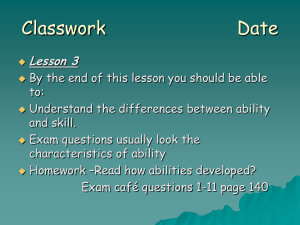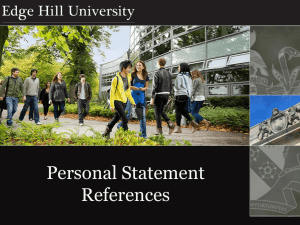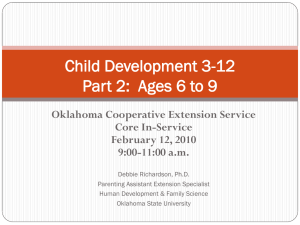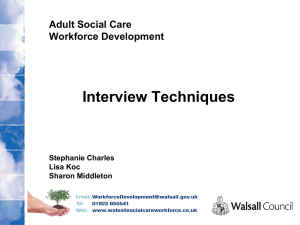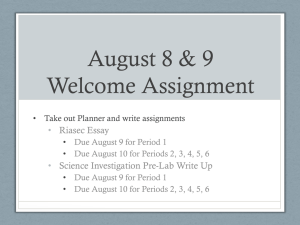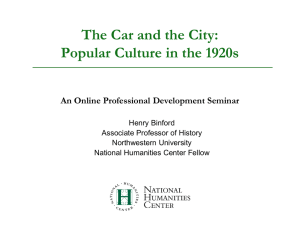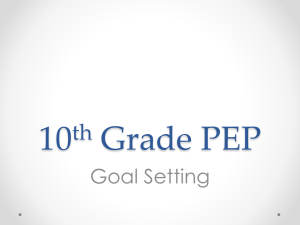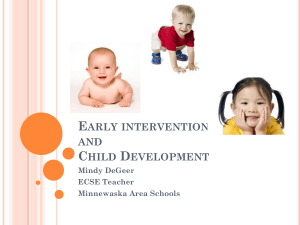ABILITY - Plantsbrook School
advertisement
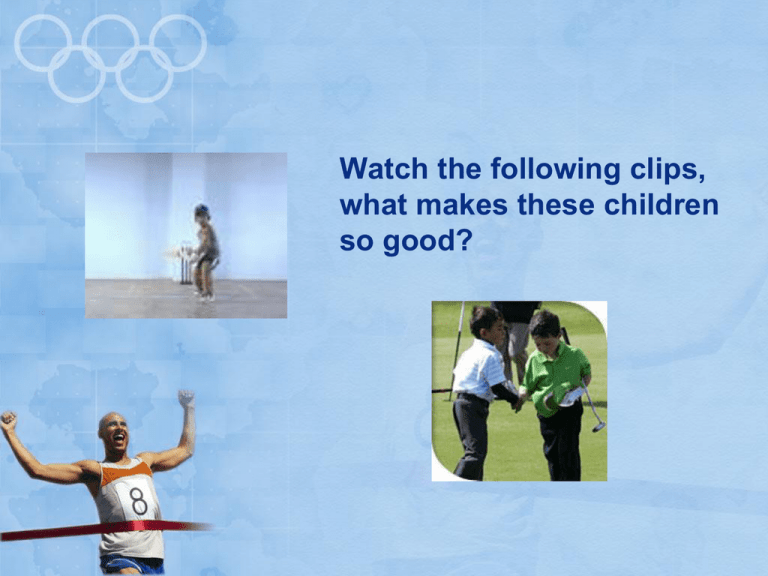
Watch the following clips, what makes these children so good? ABILITY We now understand what we mean by the term “skill”. Often we use the term “ability” instead of “skill” but we will now examine the term “ability” to show that the two are in fact different. What are the characteristics of SKILL again?????? > Learned > Goal determined > Follows a technical model If we are to learn a particular skill we must have certain abilities that skill relies on. For example, to be able to perform a handstand you must have strength in your arms to support your body weight as well as the balance to keep your legs above your hands!! Q. What abilities does your sport/skill rely on? Characteristics of ABILITIES INNATE/GENETICALLY determined We are born with abilities determined by the genes we inherit from our parents. STABLE and ENDURING Abilities tend to remain unchanged but can be affected by our Experiences and are developed by maturation Characteristics of ABILITIES SUPPORT SKILLS Each skill usually needs us to have several supporting or underpinning abilities if we are going to be able to learn the skill effectively. So what is ABILITY? Schmidt “ an inherited, relatively enduring trait that underlies or supports various kinds of motor and cognitive activities or skills. Abilities are thought of as being largely genetically determined”. So, abilities are thought to be the foundation blocks that we possess and build on, helping us to learn and perform skills. We inherit our abilities from our parents and some psychologists believe that they cannot be modified or improved by practice, whilst others think that they are modified by maturation and experience. However ALL psychologists tend to agree that abilities determine your learning and performance of skills and activities. Can you give an example of how you could be inherited certain abilities which could affect you playing a certain sport??? If you are born with a lot of slow twitch muscle fibres you could become a good endurance athlete but will never excel in sprinting. Similarly, if you are born with low levels of flexibility it is unlikely that you will ever be a top class gymnast TYPES of ABILITY Fleishman – identified 2 types 1. GROSS MOTOR ABILITIES These usually involve movement and are related to Physical fitness. Fleishman identified 9 of them: TYPES of ABILITY 1. Dynamic strength – exerting muscular force repeatedly over a period of time e.g press ups 2. Static strength – the maximum strength that can be exerted against an external object 3. Explosive strength – energy used effectively for a short burst of muscular effort, e.g vertical jump 4. Stamina – the capacity to sustain maximum effort involving the cardiovascular system e.g marathon TYPES of ABILITY 5. Extent flexibility – flexing or stretching the trunk and back muscles 6. Dynamic flexibility – being able to make several rapid flexing movements 7. Gross body co-ordination – the organisation of the actions of several parts of the body whilst the body is moving 8. Gross body equilibrium – being able to maintain balance using the internal senses 9. Trunk strength – the strength of the abdominal muscles GROSS MOTOR ABILITIES For each of the gross motor abilities identify a skill/activity that you do that underpins/supports it? TYPES OF ABILITY 2. PSYCHO MOTOR ABILITIES This usually involves the processing of information and the formation of a decision Fleishman identified 11 of these, the main ones being: 1. Multi-limb co-ordination – being able to organise the movement of several limbs at the same time. 2. Response orientation – choosing quickly the position in which an action should be made 3. Reaction time – being able to respond quickly to a stimulus PERCEPTUAL MOTOR ABILITIES 4. Speed of movement – being able to make gross rapid movements. 5. Finger dexterity – being able to work with tiny objects using the fingers. 6. Manual dexterity – being able to make accurate arm/hand movements involving objects at speed 7. Rate control – being able to change speed and direction of responses accurately. 8. Aiming – being able to aim accurately at a small object. PERCEPTUAL MOTOR ABILITIES For each of the perceptual motor abilities identify a skill/activity that you do that underpins/supports it? HOW MUCH DO YOU REMEMBER???? What is an ability? What is psychomotor ability? What is gross motor ability? Explain the relationship between skill and ability? Identify three gross motor abilities and three psycho motor abilities for a sport and justify your answers? How are ABILITIES DEVELOPED? It is generally thought that abilities can be developed during early childhood and it is important that during this period children are exposed to a wide range of experiences and the opportunity to practice. Children should also receive expert teaching and coaching, good support from family and friends and have suitable role-models to enhance their abilities. Motor Skill Development In the last section we looked at abilities and how they support a variety of skills. Generally it is accepted that these abilities are improved through maturation and experience. Abilities are seen as building blocks upon which we develop skills. Children develop skills in an ordered manner that follows set stages. Motor Skill Development They first use their abilities to learn basic or rudimentary movement skills such as walking, running, skipping, pushing, stretching and balancing. These basic movement skills will form the foundation on which further development takes place. During the early years of primary school (4-9yr olds) children are physically and mentally capable of learning skills and are also hightly motivated and enthusiastic about it. At this stage expert teaching is needed to develop the childs rudimentary movement skills further into fundamental motor skills (FMS) Javelin throw, Tennis serve, Volleyball serve SPORT SPECIFIC SKILLS Golf swing, Hockey drive, Cricket drive SPORT SKILL PROFICIENCY BARRIER Overhand throw Two-hand side FUNDAMENTAL MOTOR SKILLS RUDIMENTARY MOVEMENT SKILLS INFANT REFLEXES & REACTIONS arm strike

